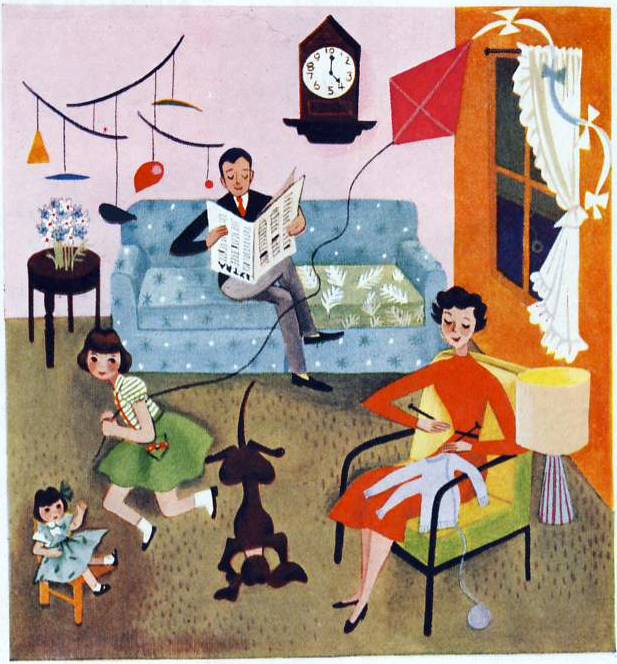Post War America 1945-1960

The American landscape in Post-war America is often described as a conservative and repressive time not only for women but for the country as well. In his book, The Paradox of Change, William Chafe sees this period as " the 1950's have frequently been viewed as the embodiment of traditional family life and the 'feminine mystique'....the age seemed dedicated to the celebration of conventional sex roles, with men taking the task of conquering the world and women content to infuse the home with warmth and happiness" (Chafe 182). Yet simmering beneath the calm veneer of prosperity and contentment were the beginnings of Women's Liberation, the Civil Rights Movement, and the coming of age of the Baby Boom generation. This project will attempt to discover how the attitudes of the post-war era influenced the craft of knitting. During this era knitting was a vital and creative daily activity in many women's lives. This project will only explore a few spheres which affected women and their craft.
Over the Meadow and Through the Woods...
WOW (Work of Women)
To Market to Market

Millions of people learned to knit for the war effort and yarn manufacurers and retailers were anticipating a post war fashion knitting boom. For two decades women postponed their personal knitting (first from the Great Depression, then knitting for the war). Given the time and yarn, these women would return to their knitting for themselves and families, and as predicted many frenetic wartime knitters continued into peace time. A substantial number of women, including married women, continued to work outside the home and also continued to knit (Strawn 153). Reviewing knitting and craft magazines, pattern books, and recent scholarly essays about working women from the Postwar Era allows us a new prism into the knitters of America.
Comments (0)
You don't have permission to comment on this page.